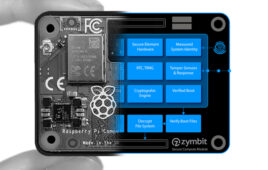Traditional lens manufacturing methods have required the use of costly metal molds, thus preventing lens makers from being able to easily tool a variety of lens shapes and sizes. Researchers from Washington State University and Ohio State University are trying to overcome this limitation using a liquid mold that allows greater flexibility and customization.
The researchers, led by Lei Li, assistant professor in the School of Mechanical and Materials Engineering at Washington State, and graduate student Mojtaba Falahati, developed a liquid mold from droplets that they can manipulate with magnets to easily customize lens shapes and sizes. Their work is featured in the journal, Applied Physics Letters.
The limitations of traditional lens manufacturing surfaced when the scientists tried searching for lenses for their work to develop a portable laboratory reader on a phone. 3D printing was deemed impractical, because of the difficulty controlling the lens shape. The researchers then explored the idea of using magnets and the surface tension of liquids to create free-flowing molds.
The scientists placed tiny, magnetic iron particles into liquid droplets and surrounded the droplets with magnets using a custom-built device. The plastic material used in the lenses was poured over the droplet. As the material is magnetized, the droplet takes on a conical lens shape—creating a mold for the plastic lens material. Curing the plastic produced a hardened lens with the same optical properties and imaging quality as a commercial lens. The liquid droplet remains separate and can be re-used.
Manipulating the position of the magnets changes the magnetic field to alter the mold shape and thus the resultant lens. By changing the droplet size, the researchers can also create lenses of varying sizes.
“We brought the concept of interfacial tension to the field of optics by introducing an innovative controllable liquid mold,” says Li. “This novel process allowed us to regulate the shape of a magnetic drop and to create lenses, without having to fabricate expensive molds.”
Filed Under: Product design, Student programs




